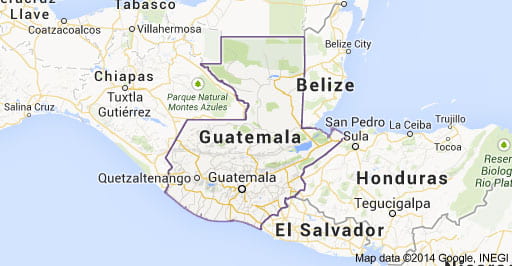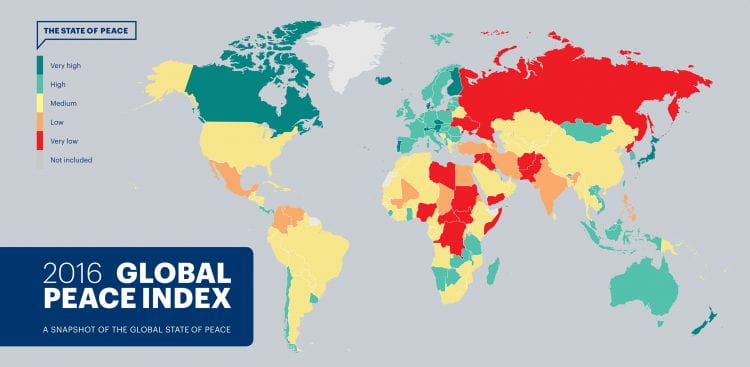December 5, 2016
Contextual engineering – why a greater appreciation for the role of conflict and peace studies is key to the success of infrastructure projects

Elyse O’C. Lewis
Recently I had the opportunity to sit on a panel at a symposium hosted by my undergraduate alma mater, Marquette University. The symposium – What was Achieved? Migration, Impunity, and Social Justice after the Peace Accords in El Salvador and Guatemala – was organized by professors of history, Spanish, philosophy, and business with the support of multiple sponsors including the College of Engineering. The wide range of interdisciplinary expertise involved in planning the gathering led to a fascinating scope of dialogue.

Map of Guatemala and El Salvador
Guatemala and El Salvador both experienced vicious civil wars over the course of the late 70s into the mid-90s; to paraphrase the words of the primary symposium organizer, Dr. Laura Matthew, these were conflicts that involved socialist guerrilla uprisings inspired by the Cuban revolution on one side and US-backed, anti-communist autocratic governments on the other. Both populations experienced rampant crimes against humanity in the form of civilian massacres and forced disappearances of thousands of political dissenters for 20+ years which caused the flight of refugees from both countries. Both conflicts ended in the mid-90s with the signing of peace accords on the international stage. As the name of the symposium suggests, the dialogue focused on the modern day state of affairs in both countries and how they have been shaped by the conflict.
I was invited to address questions related to social justice in modern day Guatemala based on my experience working on small scale infrastructure projects there for the past 6 years through Engineers Without Borders USA (EWB-USA). In the context of my work, the modern day impacts of the civil war often arose when neighboring communities had to work together on a project. During the war, much of the killing was perpetrated by civil patrols when a militia from one community would be ordered by the military to kill individuals deemed subversives in their neighboring community. As one might imagine, this makes it extremely difficult to convince communities with this history to share a water source or the cost of a bridge. Without an appreciation of this context of conflict, community buy-in can be non-existent, and therefore a project’s sustainability is undermined before it begins.
The rest of the speakers reported experiences similar to mine, however many of them had actually experienced the conflict first-hand and often on a national level rather than in a few rural communities. Listening to the dialogue, a major difference and a major commonality arose between the post-war realities in the two countries. The major difference is the context in which the peace accords were signed and the resultant impacts (or lack thereof) that they have had; in Guatemala, the guerrillas were losing badly whereas the FMLN revolutionaries in El Salvador were on the verge of taking the capitol. As a result, while the scope of the peace accords in El Salvador was smaller than the accords signed in Guatemala, more has been accomplished in terms of political representation and subsequent resources in El Salvador. Despite this, both countries share the unfortunate reality of drug and gang-related violence which has led to rampant corruption.
While civil wars in Guatemala and El Salvador seem distant and irrelevant to an engineer in the US, lessons learned from these post-Cold War (and present-day War on Drugs) battlefields will become increasingly relevant with time. We are currently living in a time that the US State Department and military have deemed an era of persistent conflict and cite, among other factors, globalization, technology, population growth, resource competition, and climate change as “trends creating the conditions” for this persistent conflict. It’s important to point out the difference between violence and conflict, because while violence such as homicide, genocide, and war in general is declining on an historical scale, conflict goes beyond violence. Conflict, however, occurs whenever two or more parties have opposing views and, as explained by the Association Graines de Paix, can either result in violence or dialogue with the potential to find a compromise solution.
Not only is this relevant because our work as engineers touch on all of these areas, but also because our work will increasingly occur in ongoing or post-conflict settings; while the US will hopefully avoid violent conflicts, conflicts within and between communities in a region and/or related to resources such as water and land are already prevalent – according to the 2016 Global Peace Index (below), the US only ranks 103 out of 163 countries based on 23 quantitative and qualitative metrics that measure peace. As populations continue to grow in size and density while resources are simultaneously depleted by natural events such as the draught in the west, dealing with conflict will be more critical than ever to the success of civil engineering projects.

2016 Global Peace Indexhttp://www.visionofhumanity.org/#/page/indexes/global-peace-index
Today’s rapid globalization and urbanization means that our work as engineers will increasingly occur within complex socio-economic systems and most likely within areas and communities coping with former or ongoing conflict. To be successful in this new, more complex world, we engineers cannot expect to focus solely on technical solutions, but must do our best to engage with, understand, and incorporate the context of a project.
Recent Comments